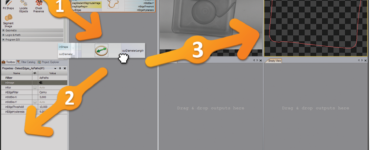The purpose of an ERP system is to manage the different activities of your business in an integrated way. However, without proper connectivity, the system will not be able to function properly. Rather than acting like a single unit, the system’s components will function independently.
With all that said, have you ever wanted to know more about Netsuite integration? Perhaps more importantly, how can you implement an effective Netsuite integration strategy?
If you want answers to these questions and more, then you might find the following helpful by taking note of the do’s and don’ts.
Do Plan and Strategize
When it comes to integrating NetSuite, a thoroughly planned and strategized approach is essential. Do map out how the system will best meet the needs of the business. Document all the processes and data flow necessary.
Also, do conduct a feasibility study to determine the right NetSuite setup by:
- assessing data
- evaluating functionalities
- expanding upon current capabilities
Strategize by leveraging existing resources to keep costs down and maximize value. If you decide on using Netsuite, make sure to strategize and make your company ready with all the hardware required for the transition along with the Oracle NetSuite ERP Pricing.
Do Use Standard Connectors and APIs
Using standard connectors and APIs helps ensure the integration works properly and smoothly, eliminating manual entry of data or exporting data from one system to another. Connectors are designed to automate the transfer of data between systems.
Connectors reduce opportunities for errors. Utilizing cloud-based APIs can integrate multiple functions and reduce the overall complexity of software requirements.
Do Test and Validate
To ensure accuracy and stability, thoroughly testing the interfaces and functionality is key. Sometimes the integration will require manual testing or signing off as complete. This is critical to protect:
- data security
- integrity
- accuracy
Taking the time to validate the integration before deployment is a crucial stage to a successful result.
Don’t Rush the Integration Process
Take the time necessary to ensure the integration is complete and accurate. Understand the specifics of both the Netsuite platform and your business platform. This helps you make sure that any data transferred is properly understood and properly synced.
Be familiar with the penalties and risks that may come with incomplete integration. Double-check:
- data sources
- connections
- structure
This helps you make sure the accuracy of data is maintained. Investing in the right resources and taking the time to make sure the integration process is done correctly is key to successful integration.
Don’t Neglect Data Mapping and Transformation
If data is not properly mapped to the necessary fields within NetSuite technology, then users may have difficulty understanding where data is stored and how it should be used. Therefore, it is important to take the time to map and transform each field before data is transferred.
This is because it helps you make sure that all data is correctly migrated to the destination system. It is also important to review and test the mapping for accuracy. Never fail to understand the data transformation implications before the integration process.
Be Aware of The Do’s and Don’ts of Netsuite Integration
Integrating your system with NetSuite can open up a world of new opportunities with time and cost savings. However, the integration process is complex and requires attention to detail to ensure everything runs smoothly.
Consider all the dos and don’ts of NetSuite integration with a trained professional. Doing the groundwork early ensures you get the most out of this powerful tool. Contact a team today and let them help you get started with NetSuite Integration.
Explore our blog for more articles.










